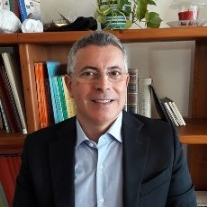Rare-Earth-Doped Fiber Lasers and Amplifiers
A special issue of Photonics (ISSN 2304-6732). This special issue belongs to the section "Lasers, Light Sources and Sensors".
Deadline for manuscript submissions: closed (30 June 2022) | Viewed by 11620
Special Issue Editor
Interests: fiber optics; long period grating (LPG) fiber devices; rare-earth doped fiber laser; microwave photonics; microwave devices
Special Issues, Collections and Topics in MDPI journals
Special Issue Information
Dear Colleagues,
During the last several decades, a great deal of research activities in the field of rare-earth-doped fiber lasers and amplifiers—in both integrated optics and optical fiber technologies—have been accomplished. These devices are enabling a disruptive revolution where the photons are used to detect, store, process, and transmit information. They are the key elements of the current and future communication systems based on guided and free propagation optical links. Moreover, the advances in lasers and optical amplifiers have promoted innovative and exciting applications in the fields of material processing, industrial applications, imaging, medicine, sensing, etc. The aim of this Special Issue is to collect interdisciplinary contributions on this research area. Technical topics include but are not limited to the following:
- Optical materials and rare earth doping;
- Fiber laser technology;
- Modeling of rare-earth-doped lasers and amplifiers;
- Amplified spontaneous emission (ASE) sources;
- Novel pumping schemes of rare-earth-doped lasers and amplifiers;
- Medium infrared lasing in rare-earth-doped optical fibers;
- Short and ultrashort pulse fiber lasers;
- Rare-earth-doped microresonators;
- Application of rare-earth-doped lasers and amplifiers to material processing, industrial applications, imaging, medical diagnosis/ therapy, sensing, and so on.
Prof. Dr. Francesco Prudenzano
Guest Editor
Manuscript Submission Information
Manuscripts should be submitted online at www.mdpi.com by registering and logging in to this website. Once you are registered, click here to go to the submission form. Manuscripts can be submitted until the deadline. All submissions that pass pre-check are peer-reviewed. Accepted papers will be published continuously in the journal (as soon as accepted) and will be listed together on the special issue website. Research articles, review articles as well as short communications are invited. For planned papers, a title and short abstract (about 100 words) can be sent to the Editorial Office for announcement on this website.
Submitted manuscripts should not have been published previously, nor be under consideration for publication elsewhere (except conference proceedings papers). All manuscripts are thoroughly refereed through a single-blind peer-review process. A guide for authors and other relevant information for submission of manuscripts is available on the Instructions for Authors page. Photonics is an international peer-reviewed open access monthly journal published by MDPI.
Please visit the Instructions for Authors page before submitting a manuscript. The Article Processing Charge (APC) for publication in this open access journal is 2400 CHF (Swiss Francs). Submitted papers should be well formatted and use good English. Authors may use MDPI's English editing service prior to publication or during author revisions.





